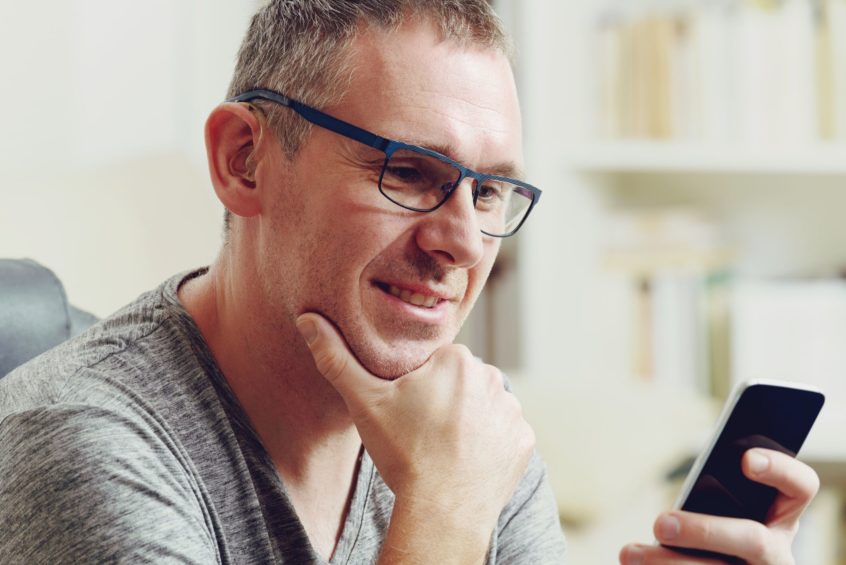If you have a smartphone, computer, a new vehicle or new hearing aids, you already may be using Bluetooth technology. But do you know how it works, and that it’s a key feature in many of the latest hearing aids on the market?
What Is Bluetooth?
Bluetooth is a technology that is used to send signals between electronic devices. The original purpose of Bluetooth technology was to help us get rid of all the cables connected from our computer to our keyboard, mouse, and monitor. That’s why instead of relying on cables, one Bluetooth-equipped device can send a wireless signal to another Bluetooth-equipped device, and the signal can be interpreted immediately. This gives the user acceptable functionality without having to worry about plugging in all their devices or fighting with a twisted tangle of wires and cables.
How Bluetooth Technology Works
Bluetooth technology was designed to be used for short distances. For example, many Bluetooth devices have a range of about 30 to 40 feet. In some cases, you can get Bluetooth devices that have a range of up to 100 feet. When you use a Bluetooth device, it encodes information in a coded signal and broadcasts it out to other Bluetooth-enabled devices within range. The other devices can then pick up on the signal.
Bluetooth Devices Are Ubiquitous
Today, many devices are Bluetooth-enabled. For example, most of the cell phones now available have Bluetooth capabilities. Most computers also are compatible with Bluetooth technology. Besides computers and phones, you can also find it in headphones, speakers, home entertainment systems, printers, keyboards, computer mice, new vehicles, and yes, hearing aids.
Bluetooth Hearing Aid Technology
When your hearing aids are Bluetooth-compatible, it allows you to connect with specific Bluetooth-enabled devices, such as your smartphone. In fact, Bluetooth technology has made it possible for your cell phone to ring and for you to hear directly through your hearing aid(s). This allows for convenient hands-free communication, as well as hearing in both ears, which results in a much clearer signal than when using a phone on one ear.
Most hearing aid manufacturers now have hearing aids that utilize Bluetooth technology compatible with Apple and Android phones. The more sophisticated hearing aids have a streamer built in, so no additional devices, streamers or wires are necessary in order to connect from your hearing aids to other devices, like your phone. You just have to pair the devices, if they are compatible.
Streamers Link Hearing Aids and Blue-Tooth Devices
For those whose hearing aids do not have Bluetooth capability, compatible assistive listening devices, usually called streamers, can provide a communication link between the wireless technology in the hearing aids and Bluetooth-enabled devices.
All that’s required is for you to pair the hearing aids with the streamer, and the streamer with another external device, say a smartphone. Once this connection is established, the streamer can pick up the Bluetooth signal from the phone, sending it to the hearing aids via a digital signal or electromagnetic field. The streamer is usually worn around the neck, or placed in a pocket for hands-free operation. In addition, you can pair several devices to one streamer, like your cell phones and your iPad. If you receive a call while listening to a podcast, for example, the streamer can pause the audio so you can receive the incoming call.
If you’re uncomfortable with learning the new technology or have questions about how this technology may help you, the doctoral-level audiologists at Associated Audiologists will help walk you through the initial set-up and will show you how to pair your new hearing aids with other Bluetooth-enabled devices.
To learn more about other advances in hearing aid technology, download our free e-book, The Top 10 Advances in Hearing Aid Technology.



